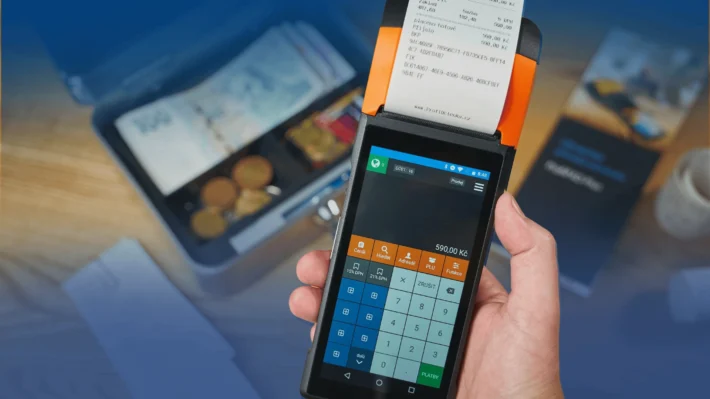How to Maximize Profitability through Demand-Driven Menus?

Understanding Demand Planning
Demand planning is a process used in supply chain management to forecast demand, and ensure that the necessary resources are available to meet the demand needs.
In simple terms, demand planning in the restaurant industry means projecting future demand for food and beverage, but also workforce, and preparing the necessary supply to meet the forecasted demand. This is more than meets the eyes.
Accurate demand prediction is not always straightforward and is often susceptible to errors. To mitigate inaccuracies, using software that consolidates data from all operational areas of the restaurant is essential. The ideal solution is an enterprise resource planning (ERP) system, which centralizes all restaurant operations, including sales, finance, accounting, purchasing, inventory, HR, or marketing.
Collecting and Analyzing Data
While demand planning can technically be conducted outside of an ERP environment, collecting data from all operational areas within a restaurant can be time-consuming and inefficient. When reports from sales, inventory, purchasing, and even HR are not integrated into a single system, data collection often requires manual input, which increases the risk of errors.
Moreover, analyzing the collected data can present challenges, particularly when aligning different formats. These inconsistencies can lead to human errors, resulting in wasted time and inaccuracies in forecasting. Such flaws can significantly impact menu planning and, consequently, profitability.

Restaurant ERP software eliminates the risk of human error by automating data analysis. With all data automatically synced in a single platform, the time needed to gather and analyze information is greatly reduced. This efficiency not only streamlines demand planning but also enhances the accuracy of forecasts, enabling restaurant managers to make informed decisions about menu offerings.
Incorporating demand-driven insights allows restaurants to adjust their menus based on actual customer preferences, optimizing inventory levels and reducing waste. Ultimately, this leads to increased profitability and a more sustainable operation.
Menu Engineering Strategies
Menu engineering is a powerful strategy to boost demand by leveraging your most popular and profitable menu items or upselling underperforming ones. With Polaris ERP, your restaurant’s sales data automatically generates a menu engineering matrix for your menu items.
Menu Engineering Matrix:
- The most popular and profitable items are highlighted as stars.
- Items that are profitable but not as popular (demand is lower than for the star items) are classified as puzzles.
- Low-profit but high-popularity items are marked as plowhorses.
- Finally, low-profit and low-popularity items are labeled as dogs.
Analyzing this data takes just seconds on the Polaris ERP platform. Simply select the period you want to analyze, and the system will return the menu engineering matrix in 3 to 5 seconds. Additionally, it provides information on how many times each item has been ordered, at what times, and in what combinations.
Using this information, you can implement various strategies to boost demand. For example, you can apply dynamic pricing to promote the most profitable items during times when they typically don’t sell as well.
You can also create combos based on the frequency of specific food items paired with certain beverages. Give these combos catchy names, like “Power Combo,” or something that resonates with your target audience.
Plugging in AI-Driven Insights and Recommendations
Polaris ERP’s menu engineering tool offers even more. It is equipped with artificial intelligence (AI) technology that analyzes data from all operational areas, not just sales – this includes purchasing, inventory, accounting, HR, and more. By integrating data from these systems, the AI within the menu engineering tool can provide tailored recommendations to boost demand based on your specific context.
It is also capable of analyzing trends, and suggesting seasonal menu adjustments, depending on the menu item’s seasonality potential, to spike demand. Other types of recommendations include marketing tactics, employee upselling, or even menu adjustments.
Using Restaurant ERP for Demand Planning and Profitability
It all starts with analyzing historical sales data. Using a restaurant enterprise resource planning solution this is done in seconds, with no room for errors. A restaurant ERP software is also equipped to analyze market trends and seasonality when predicting future customer demand. The goal of this exercise is to ensure that the right menu items will be available when ordered, and that the inventory is not over-stocked with items that won’t sell, leading to waste.

By leveraging advanced analytics and machine learning algorithms, Polaris ERP can produce more accurate demand forecasts, helping you make informed purchasing decisions. The system takes into account your restaurant’s unique environment to suggest demand boosts for specific menu items, utilizing AI-powered menu engineering technology.
Incorporating these insights not only streamlines inventory management but also enhances overall profitability by aligning your offerings with actual customer preferences.
Restaurant Inventory Management for Profitable Demand-Driven Menus
With inventory built directly into the ERP system, inventory tracking is automated. The forecasted demand syncs seamlessly with inventory levels, ensuring optimal stock at all times. This minimizes the risks of stock-outs and overstocking.
Stock-outs occur when customers order menu items that aren’t available because the necessary ingredients are out of stock. This not only affects revenue but also leads to customer dissatisfaction. Conversely, overstocking happens when too many ingredients are ordered for menu items that aren’t in high demand.
This is where menu engineering analysis becomes essential. It identifies which items are likely to be ordered and which are less popular. With Polaris ERP, these predictions are more accurate, helping you avoid overstocking and the associated waste from expired ingredients.
By effectively managing inventory in alignment with demand, you can enhance profitability and ensure that your menu meets customer preferences.
Staff Involvement in Driving Demand
Staff involvement is crucial in driving demand for a restaurant’s menu and maximizing profitability. Your team members are on the front lines, interacting with customers daily, and their insights can significantly influence menu success. By training staff to understand the menu’s features, benefits, and seasonal offerings, they can effectively communicate these to guests, encouraging them to try high-margin items. When employees are knowledgeable and enthusiastic about the menu, it creates a positive dining experience that can lead to increased sales.
Incentivizing staff for upselling can create a motivated team focused on driving demand. Implementing a rewards program for employees who successfully promote specific items can lead to increased sales and enhanced profitability. By making staff an integral part of the demand-driven strategy, restaurants can create a culture of collaboration and success, ultimately maximizing profitability through well-informed and engaged team members.
Measuring Success
Measuring success in maximizing profitability through demand-driven menus involves analyzing key performance indicators (KPIs) that reflect both sales and customer satisfaction. With restaurant ERP software, you can easily track metrics such as average order value, item popularity, and overall sales trends. By monitoring these KPIs, you can evaluate the accuracy of your demand planning and identify any discrepancies in your forecasts. This analysis allows you to learn from inventory and sales data, pinpointing where predictions fell short and understanding the underlying factors.
Additionally, Polaris ERP provides valuable insights into inventory turnover and food cost percentages, helping you assess operational efficiency. Regularly reviewing these metrics enables you to identify areas for improvement, such as refining ingredient usage or adjusting pricing strategies. By gaining a clear understanding of demand drivers, you can make timely adjustments to your menu, ensuring it remains aligned with customer preferences while maximizing profitability.
You may also be interested in:
Book a free consultation with our expert team today!
Contact Us & Book A Demo
One comment
Comments are closed.




[…] Maximize Profits: Demand-Driven Menus […]